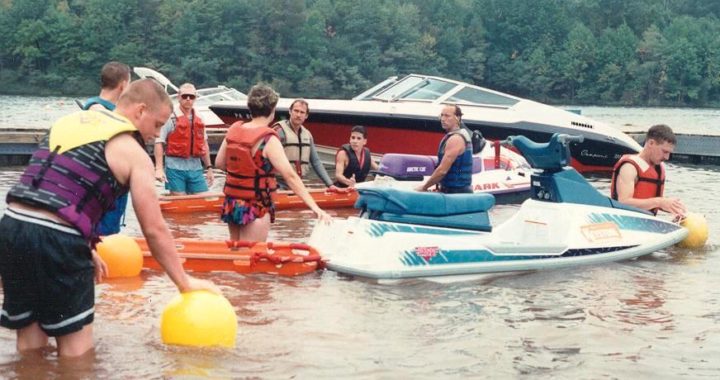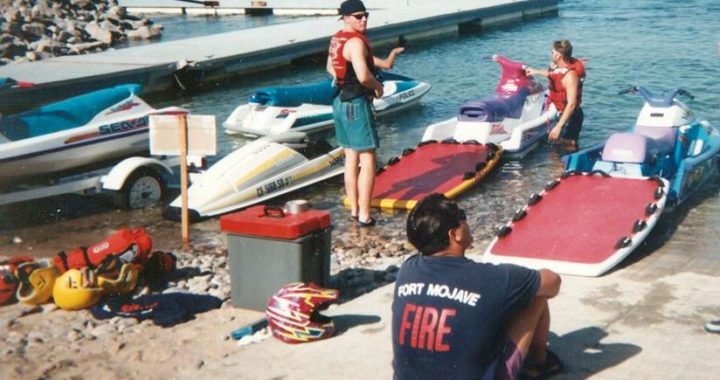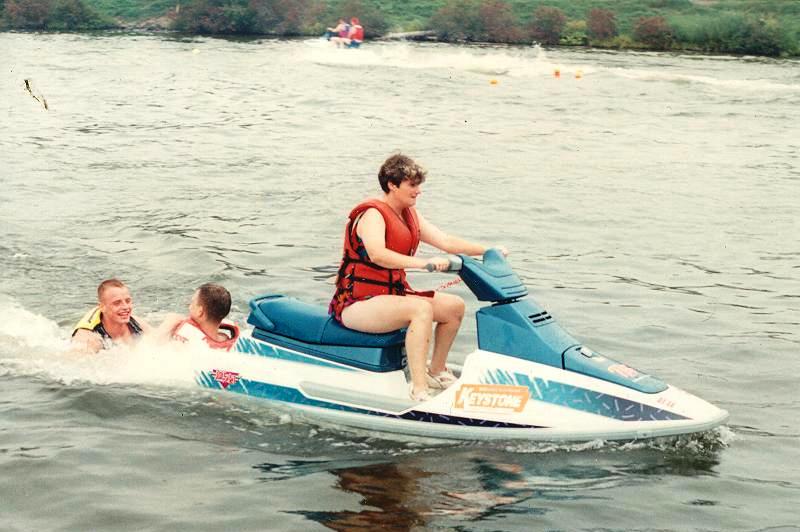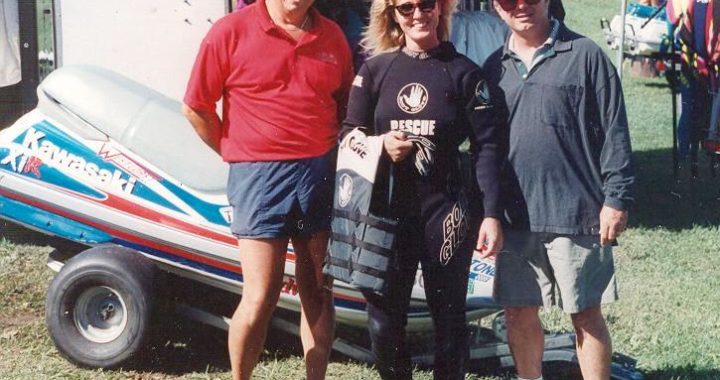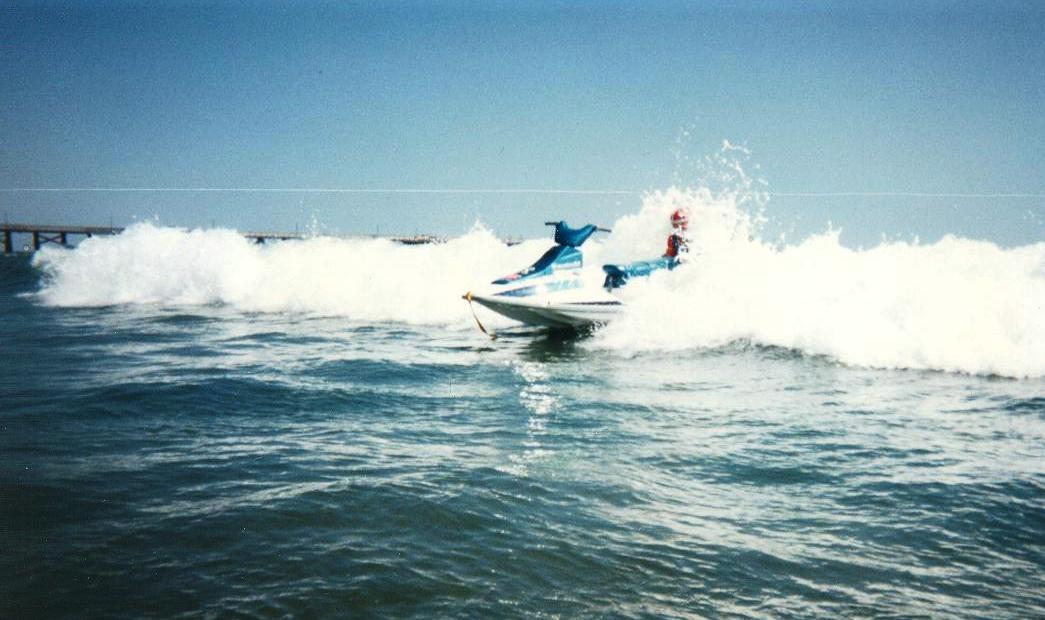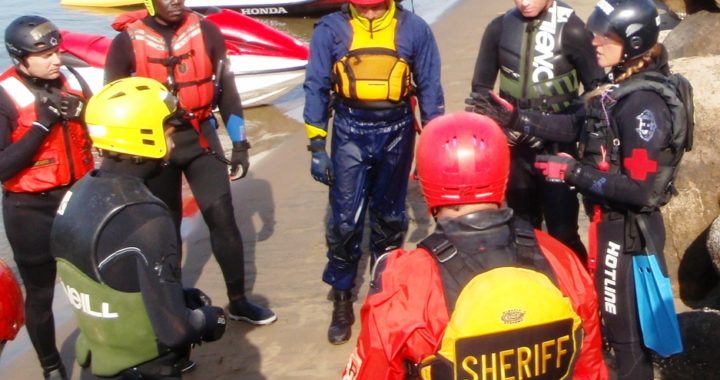PWC LAW LOAN PROGRAM
Yamaha and Kawasaki Public Safety Law Loan Program.
Personal Watercraft Industry Association Law Loan Program This program was set up through the PWIA for public safety agencies to receive loaner craft through participating dealerships
The following information is intended to help your agency to apply for use of Yamaha Water Vehicles in your boating related Public Safety work. The focal point of the program is the local Yamaha Dealer.
Once your documents are prepared you should contact the local Yamaha Water Vehicle dealer in your region.
They in turn will endorse the application and forward it to Yamaha Motors Corporation USA, with their approval to order the unit or units specified in your request. The exceptions to this otherwise straight forward process are the limitations of Yamaha's inventory (a seasonal consideration), and the willingness of the local Yamaha dealer whose participation is strictly voluntary.
In 2018, the PWIA Law Loan Program entered its 30th year supporting public and federal safety agencies with personal watercraft from Yamaha Motors Corporation USA, and Kawasaki Motors Corporation USA. The program began in 1989.
This program has essentially the same terms and conditions in 2012 that it had at its beginnings in 1989, when it was launched. In just the past year over 100 agencies acquired loan units through their local Kawasaki JET SKI® watercraft dealers.
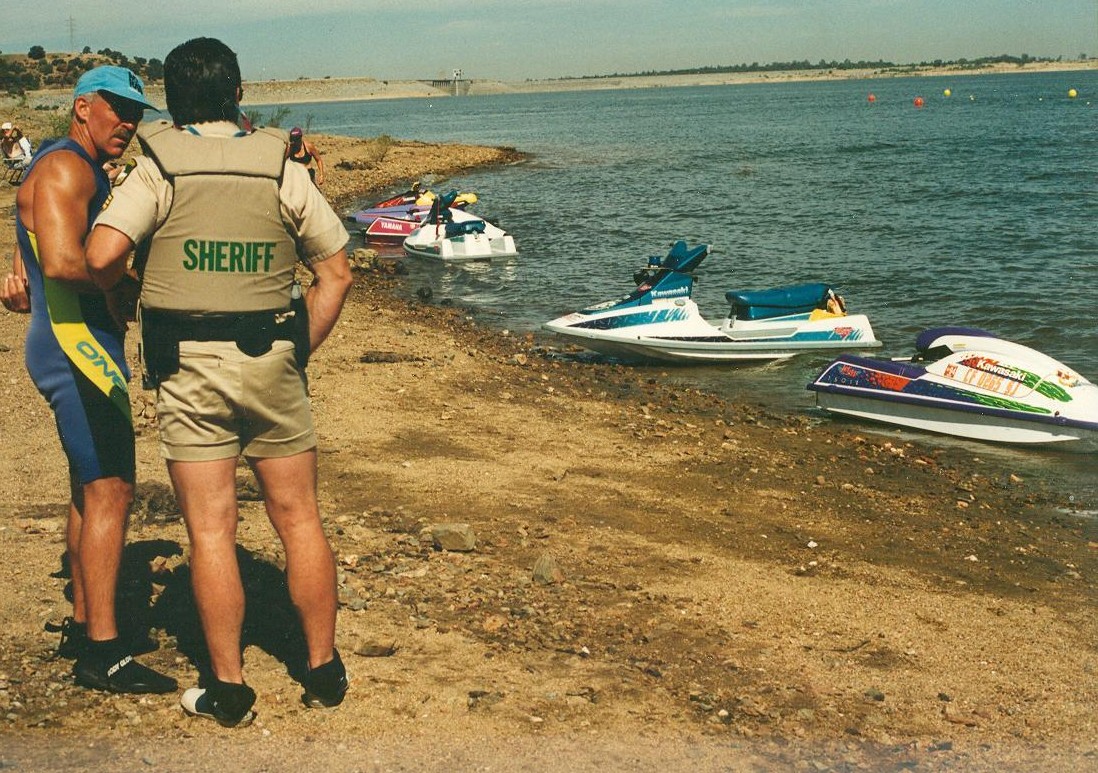
K38 Training Kawasaki TS Jet Ski
CELEBRATING 30 YEARS
In the 22 years of operation, the program has loaned approximately 4000 machines to well over 700 individual agencies. The value of these loans reaches over $20 million.
This program has been a big supporter of American communities saving taxpayers monies and supporting our local law enforcement and Search and Rescue groups.
K38 has been providing Rescue Water Craft boat operations qualification training for these agencies in concert with the PWIA Law Loan Program since 1989.
K38 has assisted hundreds of public safety agencies and thousands of personnel in competency training for these unique small boats.
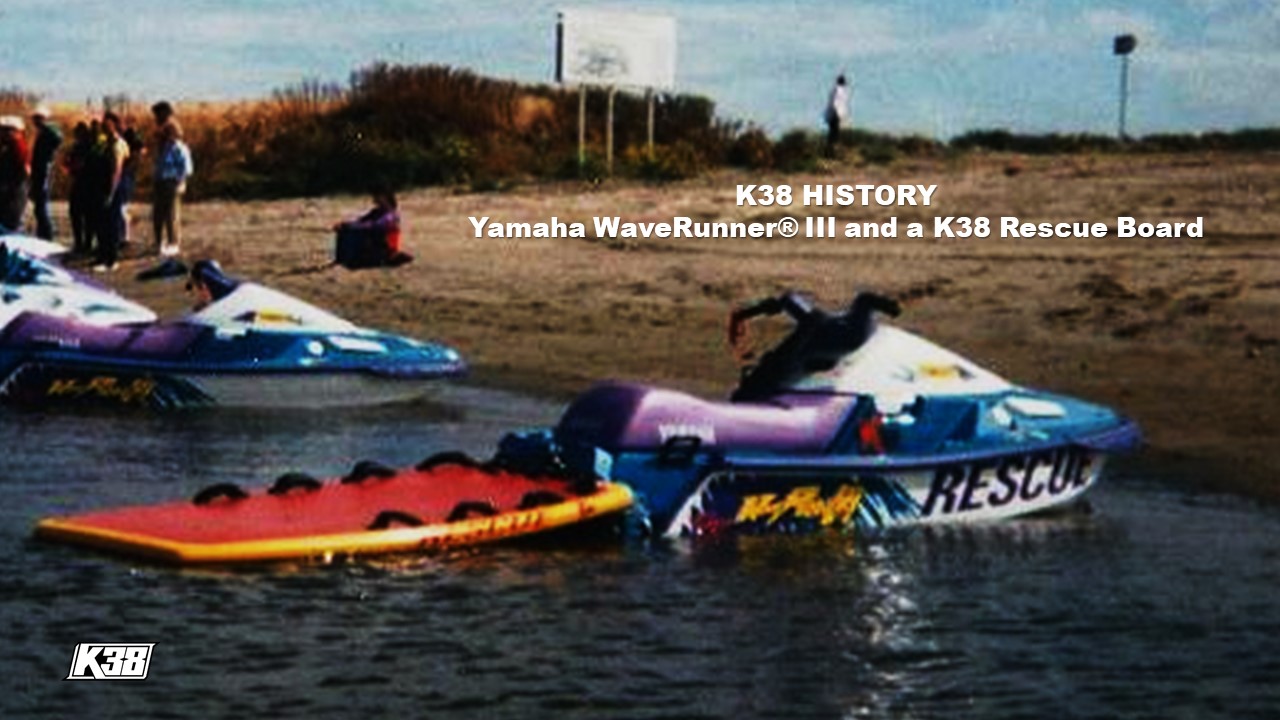
K38 Training Rescue Water Craft
KAWASAKI PUBLIC SAFETY LAW LOAN PROGRAM
POINTS TO COVER
1. Contact Information: Name, Address, Fax, Email, Agency Name and Contact Person
2. Contact Name and Number of the day (hours of operation) office of the day-to-day officer responsible for the loaned units
3. A brief statement regarding the proposed use or application of the vessel(s), (units)
4. A statement that the agency will be responsible for the routine maintenance and repair of the craft
5. A statement that the units will be returned in a condition of normal wear. Any damages the dealership notes beyond that will be the responsibility of the agency to repair.
6. A statement that the agency will assume all liability for the operation of the craft while in their possession.
As mentioned above, take this letter to your local Yamaha or Kawasaki Water Vehicle Dealer. They will add their endorsement and forward it to our office here in California or Georgia so the machine can be ordered once approved.
You can find a local Yamaha or Kawasaki dealer through their respective websites. Use your area code to conduct a search.
With the recent economic downturn many local dealerships have moved or closed, or perhaps are not participating on the law loan program. You will have to be assertive in your search if your local dealership has closed.
You do not have to stay within your city, you can roam for other surrounding areas to contact dealerships. A dealership will only have so many units available for the program.
POINTS TO COVER
1. Contact Information: Name, Address, Fax, Email, Agency Name and Contact Person
2. Contact Name and Number of the day (hours of operation) office of the day-to-day officer responsible for the loaned units
3. A brief statement regarding the proposed use or application of the vessel(s), (units)
4. A statement that the agency will be responsible for the routine maintenance and repair of the craft
5. A statement that the units will be returned in a condition of normal wear. Any damages the dealership notes beyond that will be the responsibility of the agency to repair.
6. A statement that the agency will assume all liability for the operation of the craft while in their possession.
As mentioned above, take this letter to your local Yamaha or Kawasaki Water Vehicle Dealer. They will add their endorsement and forward it to our office here in California or Georgia so the machine can be ordered once approved.
You can find a local Yamaha or Kawasaki dealer through their respective websites. Use your area code to conduct a search.
With the recent economic downturn many local dealerships have moved or closed, or perhaps are not participating on the law loan program. You will have to be assertive in your search if your local dealership has closed.
You do not have to stay within your city, you can roam for other surrounding areas to contact dealerships. A dealership will only have so many units available for the program.
K38 RECOMMENDS: THINGS TO KNOW IN ADVANCE
Good thing you are reading this! I am going to save you frustration and give you what you need:
PERSPECTIVE
1. Trailers are not included, you will need to supply your own transportation and tie downs
2. You will need to supply additional lanyards for each person on your team and replace them if worn or damaged. If you have a Bombardier, Sea Doo, you will need to have each digital lanyard coded alike off their MPEM program so your lanyards can be keyed the same. Digital keys and lanyards are not interchangeable! If you lose or break them you will not be able to start your craft.
3. Bathing suits are not to be worn, your crew must be wearing full PPE protection, and a USCG approved lifejacket, properly fitted and sized
4. Enter into effective dialogue with your loaner dealership. Do not make any make any
assumptions. Your department is held responsible for any damages to the craft upon return. Put aside an amount of money for repairs or maintenance for your program.
5. Depending upon the make, model, year and agreement, your watercraft will need a tune-up and oil change every 30-50 hours of use. (Oil filter, spark plugs, oil change)
6. Your team will need to understand how to maintain and care for craft.
7. Keep hourly logs on the boats so you can keep your maintenance hours in check.
8. Your operators need to be physically fit. This is an active ride.
9. Your operators need to know how to swim and should be evaluated wearing their full PPE kit
10. Your operators need to have their basic boating skills and current credentials in order. Our K38/NASBLA/NSBC instruction program endorses certification for a period of three years upon expiration. This is a boating standard. No exemptions! Equipment, laws, rules and regulations change, you must stay current with all your operational needs
PWC Manufacturers
1. BRP Sea Doo
2. Kawasaki Motors Corporation USA
3. Yamaha Motors Corporation USA
ABOUT PWIA
Personal Watercraft Industry Association (PWIA) represents U.S. personal watercraft manufacturers. Founded in 1987, the organization was created to promote the safe and responsible operation of personal watercraft. PWIA provides a unified voice for the segment, and represents the interests of personal watercraft manufacturers in legislative and regulatory concerns.
Content Creator - Shawn Alladio cares most about her community and the culture surrounding the safety of event service providers and Rescue Water Craft operators, working hard and dedicated towards protecting their reputation, distributing safety information and continuing to train these amazing individuals to the highest standards of care.
